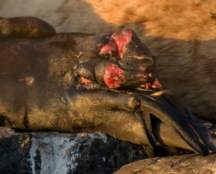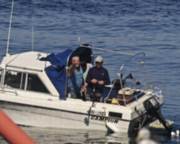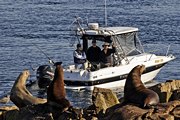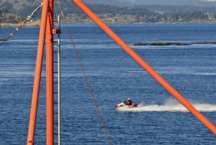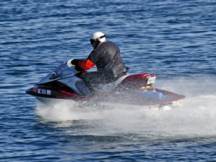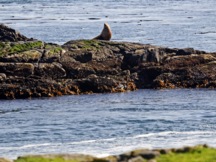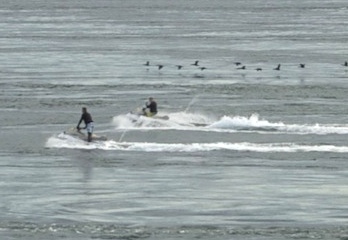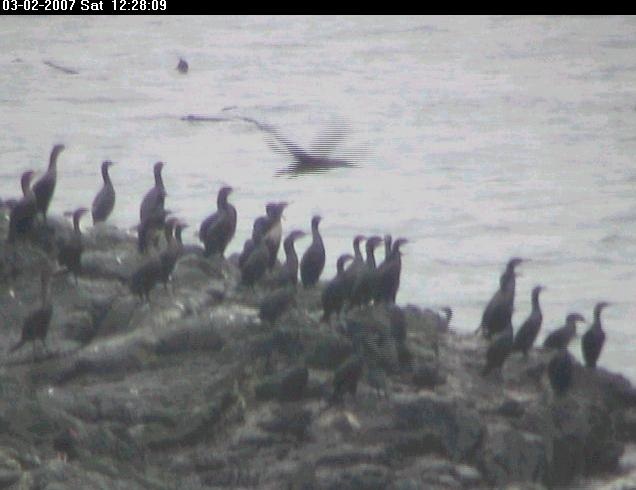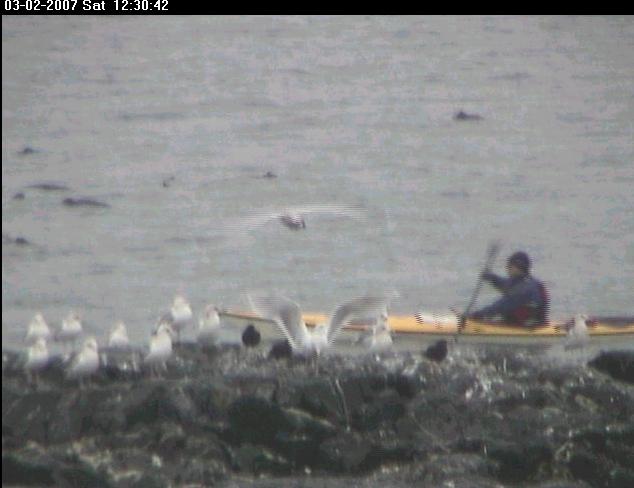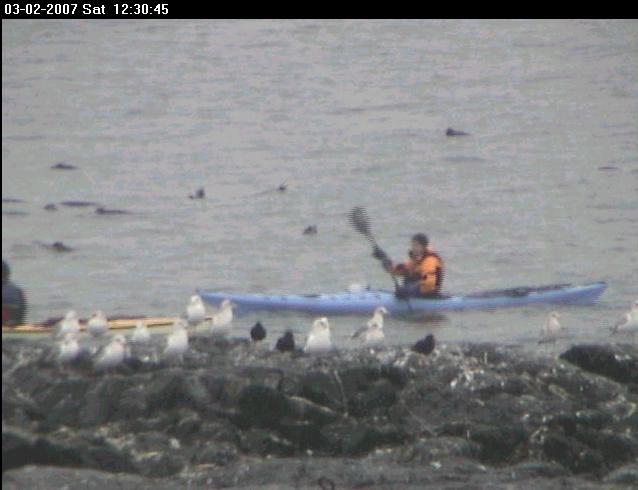The wind was out of the west today although it did swing to the southwest a few times and is trending that way now. The barometer has been slowly dropping for a few days. A few real clouds made another gorgeous sunset with a super crescent moon low in the west.
There were three tour boats today and one recreational fishing boat was noted fishing inside the reserve boundary today. They must have known as they stopped as soon as it was clear that they were being observed. There was military blasting today.
An animal census indicated 200 fewer sea lions than last week and brought to light 17 tagged and branded animals, with nine complete tag numbers recorded and seven partials. One of the Northern Sea Lions appears to have a badly embedded line around and growing into its’ neck. Only seven Glaucous–winged Gulls remain unfledged although some of the adults, presumably with failed nests are still carrying around nesting material and acting broody. At least one Pigeon Guillemot is bringing fish into the large boulder scree just west of the jetty, presumably they have a late chick there that they are feeding.
The struggle for sustainability continues and the solar panels contributed well to the island’s energy needs today even though it was not sunny all day.
Chris brought out a family group of 11 people with at least three generations today on Second Nature. They were delighted to make first hand observations of sea lion and elephant seal behaviour and enjoyed the beauty of the place.
Maintenance work consisted of the routine cleaning of solar panels, mucking out the waste, repairing the jetty fence line, collecting seawater salinity data and making biological observations. The generator was only run for an hour and a half, thanks to the solar panels.


